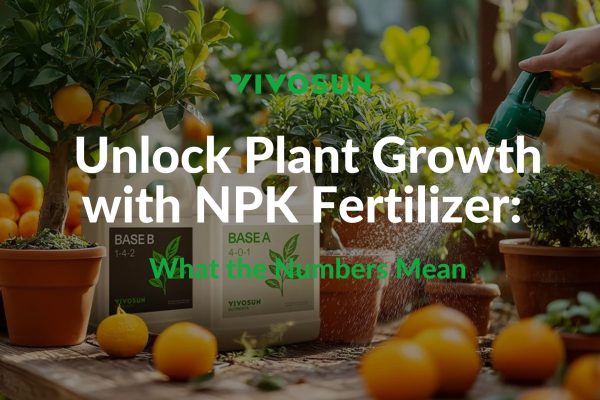There is usually a sign of the flowering stage before it begins so pay attention to your plants so you can time things well. The flowering stage is the final stage of growing before harvest. Marking when the flowering stage starts isn’t that difficult but we’ll break it down here.
Cannabis plants need long hours of uninterrupted darkness to get into the flowering stage, which helps trigger flower growing but also expect your plants to at least double in size during flowering. When you grow indoors triggering the flowering stage is related to your photoperiod: set your lights to 10-12 hours of darkness to trigger flower growing. We’ll take a look at the 7-9 weeks schedule in this article.
For most cannabis strains, the flowering stage lasts approximately 7-9 weeks but this depends on the strain. So, this schedule, the 7-9 weeks, is not the same for every strain, it is just a general principle you can refer to. Let’s analyze the flowering stage of cannabis week by week and with a few tricks you will get a great harvest in the future.

Week 1: Plant Transition Vegetative to Flower
To transition to the first week of the flowering stage you’ll need to shift the photoperiod to a schedule very different from the vegetative stage. During veg, you likely have been providing an 18/6 schedule but when we transition we want to convince the plant that winter is drawing near and that they need to start producing flowers. We do this by changing the light schedule to 12/12, which is closer to winter lighting. This will encourage female plants to grow flowers.
And although your plants have entered flowering, you still need to give them nutrients—but the amounts will be a bit different so be sure to research that.
Week 2: Identify the Sex of Plants
During the second week, the white pistils will be shown on the female cannabis plants. These wispy white hairs are located on the crossing of big fan leaves and the main stem. These white hairs will become the buds, it is called cola.
People can identify plants’ sex by the white hairs, it is easy to separate the males from the females. If the plant is male, it will grow pollen sacs, if the plant is female, it will grow white hair. Identifying the sex of the plants is a must to do, cause the creation of seeds by male plants and female plants will highly affect the quality of cannabis.
Be sure to keep feeding your plants through this stage!
Week 3: Flowering Critical Stage
During this critical stage, the female plants will start flowering by putting more energy into growing. They need to get appropriate nutrients and dosages. If the leaves of plants become yellow or they start to lose leaves pay close attention: it may be a natural occurrence during the flowering stage or it may be indicative of something more serious. Check our article for more information. If your plant is overfed you’ll know by checking the tips of the leaves which will be discolored and may start to curl depending on which nutrients they are getting too much of. It will also be worthwhile to flush your plants during this stage.
Week 4: Growth Stops and Plants Focus on Their Buds
By this stage of flowering your plants have stopped growing and are putting all their energy on growing buds in the hopes of reproducing before winter arrives. Every day you’ll note that the buds are growing larger and the trichomes make a strong pungent odor. Increasing bud size may cause your plants to tip over so make sure you support your plants with some structure.
Week 5: Buds Increase in Size Even More
As buds become thicker they start to dominate the plant. this is a good sign because it means your plant is in full flowering mode. The odor will be extremely strong at this time.
The color of the plant’s pistil hairs may convert from white to a darker amber color. At the same time, the trichomes may turn opaque. Dark hairs and milky white trichomes are good signs: they mean the plant is not far away from harvest!
Week 6-8: Flushing and Knowing When to Harvest
There are different kinds of cannabis plants and they do not flower at the same time. Even though some plants can be ready for harvest in three weeks, some of them are not ready until week eight.
A good harvest cannot be finished without flushing. Flushing plants means removing nutrients by putting pH-balanced water into the soil after the plant stops being fed. A plant with no nutrients will always taste better because nutrients really change flavors.
Using a magnifier or jeweler’s loupe will help you check whether the plants are ready to be harvested. Observe trichomes carefully, If the color of trichomes turns from clear to milky white, it is the time to harvest. If the trichomes are still clear, it might be too early.
Budding Stages of Weed
| Week | Stages | Details |
| 1 | Germination and Seedling Stage |
|
| 2 | Early Vegetative Stage |
|
| 3-4 | Mid-Vegetative Stage |
|
| 5-6 | Late Vegetative Stage and Pre-Flowering |
|
| 7-9 | Flowering Stage |
|
| 10 | Ripening and Harvest |
|
To Sum Up
If you have any questions, please don’t hesitate to reach out to us!
And be sure to check out our other blog posts for useful tips on becoming a great grower!
Subscribe to the Vivosun newsletter for growing tips, grower stories, and special offers, and get 12% off your first order!
We love the new Vivosun Smart Grow System and we are certain that you too will love it once you try it.
And join our Facebook farmer’s community for even more exclusive contests and prizes!
Download Vivosun App to get 15% off and explore more information!






